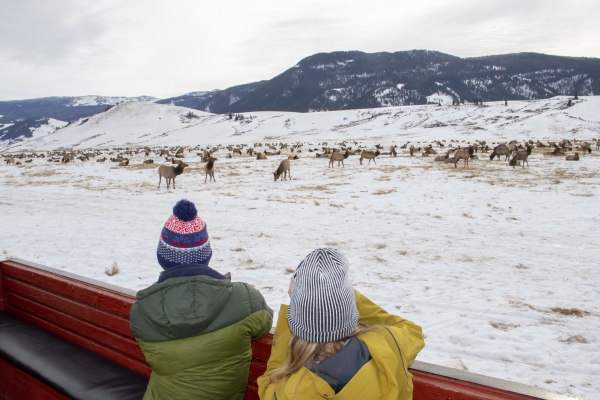
Over 257 species of birds, 23 species of mammals, at least 60 species of reptiles and amphibians, over 50 species of fish, and approximately 40 species of butterflies can be found here. Visitors might catch a glimpse of endangered and threatened species such as the wood stork and snail kite while looking for migratory songbirds, secretive marsh birds, shorebirds, and wading birds that visit throughout the year. Year-round residents include pileated woodpeckers, alligators, herons, egrets, and bobcats.
Check out recent birds sightings on eBird and wildlife sightings on iNaturalist.
Wildlife Watching Etiquette
Here are some tips that everyone should follow when observing wildlife:
Resist the temptation to feed wildlife
When you feed wildlife, the animal begins to recognize that they can receive food from humans. This can cause the animal to begin approaching humans on sight, instead of fleeing. This poses a threat to animals and could deem them as a ‘nuisance’ animal.
- View from a distance
- Visitors should appreciate wildlife from a distance and do their best to minimize all forms of disturbance.
- Do not pursue wildlife.
- Give wildlife plenty of space with a wide escape route.
- Invest in a zoom lens, binoculars, or a spotting scope to view wildlife up close.
- If a wild animal changes its behavior, you are too close.
- Follow the “Rule of Thumb”. With your arm extended and making a “thumbs up” sign, if you can cover the entire animal with your thumb, you are likely at a comfortable viewing distance for both you and wildlife.
- Wildlife can be disturbed in ways other than proximity such as flash photography, loud noises, and rapid movements
Be respectful of sensitive areas
Rookeries and nesting areas exist on the refuge. Visitors who are wanting a closer look may cause parents or young to flee or become separated, which leaves their young vulnerable to lurking predators and other dangers.
Respect other visitors
Be aware that other visitors enjoy watching wildlife, too. Please enhance the experience and enjoyment of the refuge for others by showing mutual respect.
Wildlife harassment is a crime
Harassment is defined as the disruption of natural behavioral patterns, which include, but are not limited to, breeding, feeding, or sheltering. Violators are subject to up to one year in jail and up to a $100,000 fine. Please report all suspicious activity or violations of the law by calling 1-800-307-5789.
Where can I go to see wildlife?
Visitors enjoy viewing wildlife around the refuge’s wetlands and cypress swamp by walking along the Cypress Swamp Boardwalk, Marsh Trail, Butterfly Garden, throughout the A, B, and C Impoundments, and along the L-40 and L-39 perimeter levees.
Water-based observation and photography is encouraged along the 5.5-mile Canoe Trail, within the 58-mile perimeter canal, and in 30,000 acres at southern end of the Refuge Interior.
The refuge currently has over 50 miles of pedestrian, bicycling, and paddling trails. Photography blinds and observation towers with spotting scopes are available to encourage and enhance wildlife viewing and photography.
When is the best time to see wildlife?
Wildlife viewing varies both daily and seasonally, but is usually best during the early morning or evening hours when many species of wildlife are out searching for food. If you get to the refuge early in the morning, you may get to enjoy the sweet songs of cardinals, mockingbirds, doves, wrens, and more during their morning chorus.
To increase your chances of seeing wildlife:
- Wear earth-colored clothing.
- Be still and move slowly.
- Be as quiet as possible. Refrain from yelling and shouting. We know how exciting it is to see that special critter, but yelling will likely scare it away.
- Pets are allowed in designated areas and you will have a better chance of seeing wildlife if you leave pets at home. The sounds and smells of your pet can scare wildlife away.
